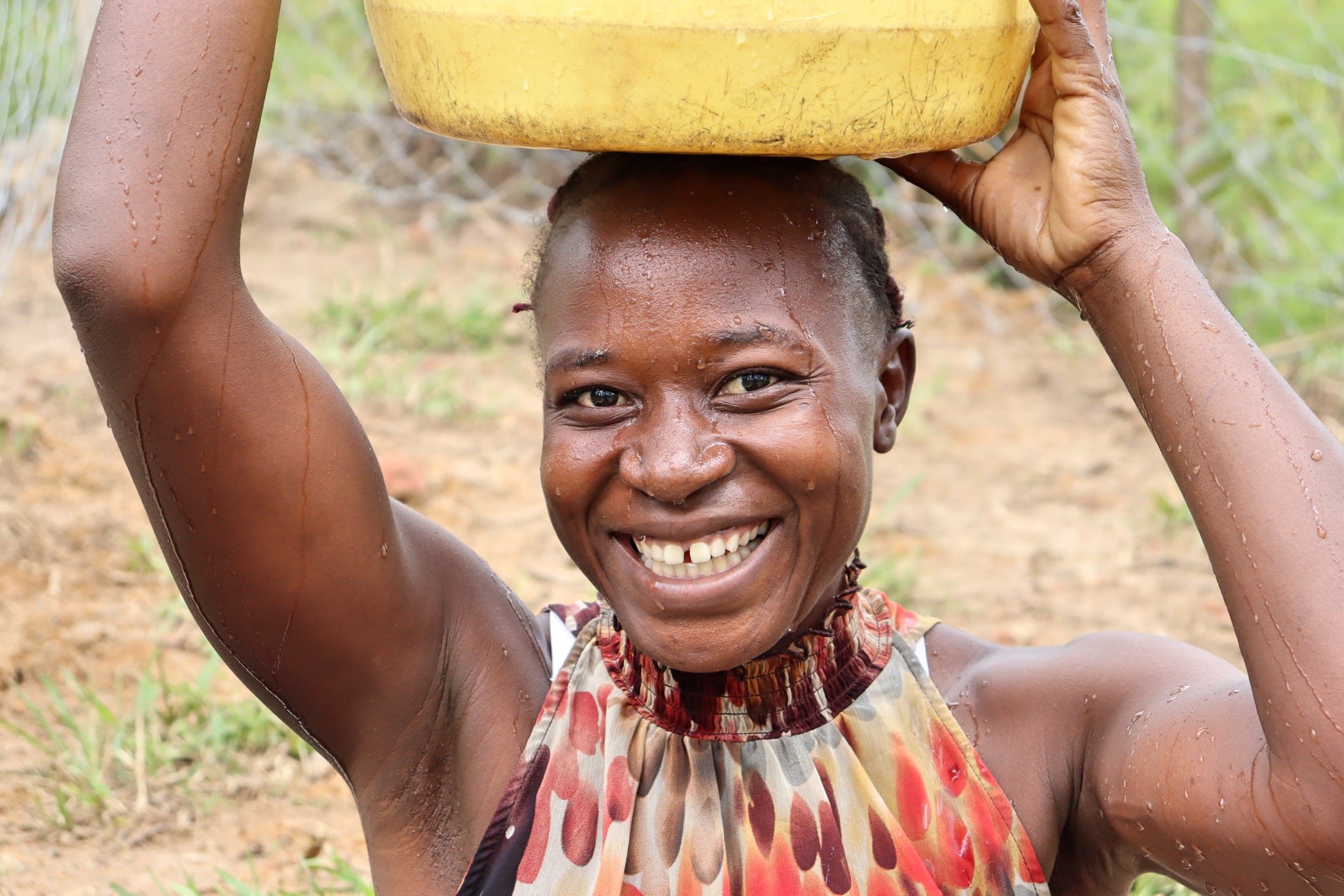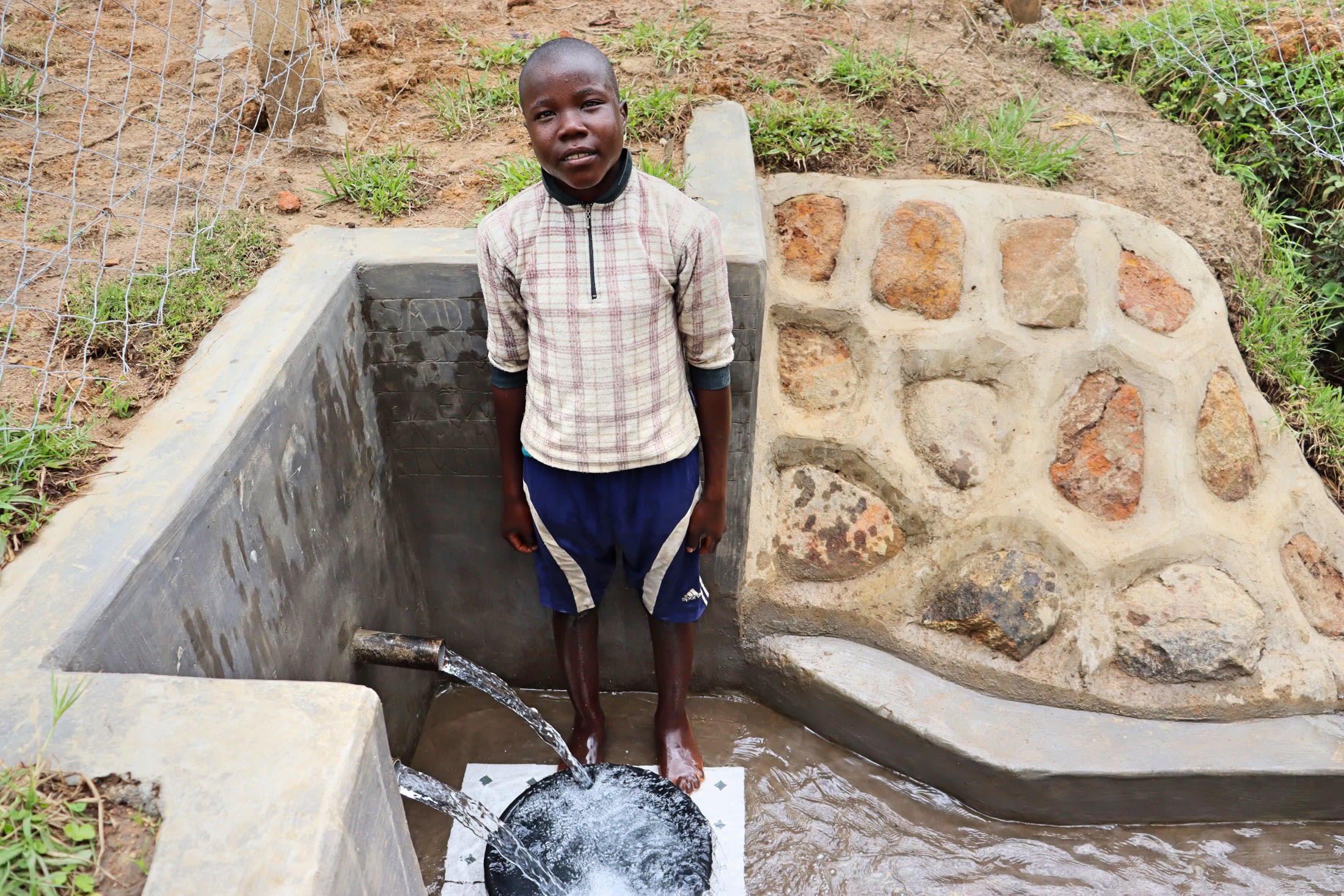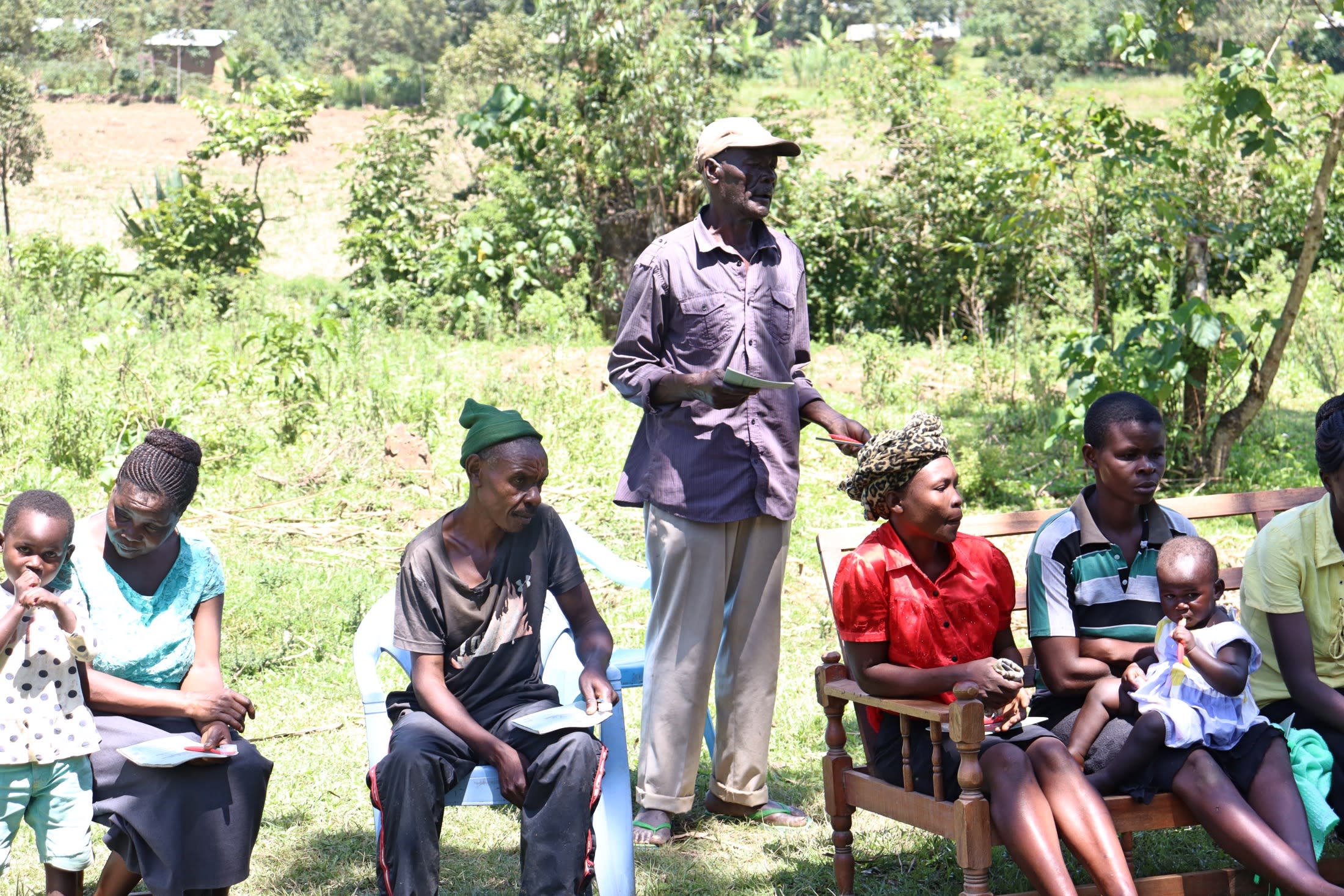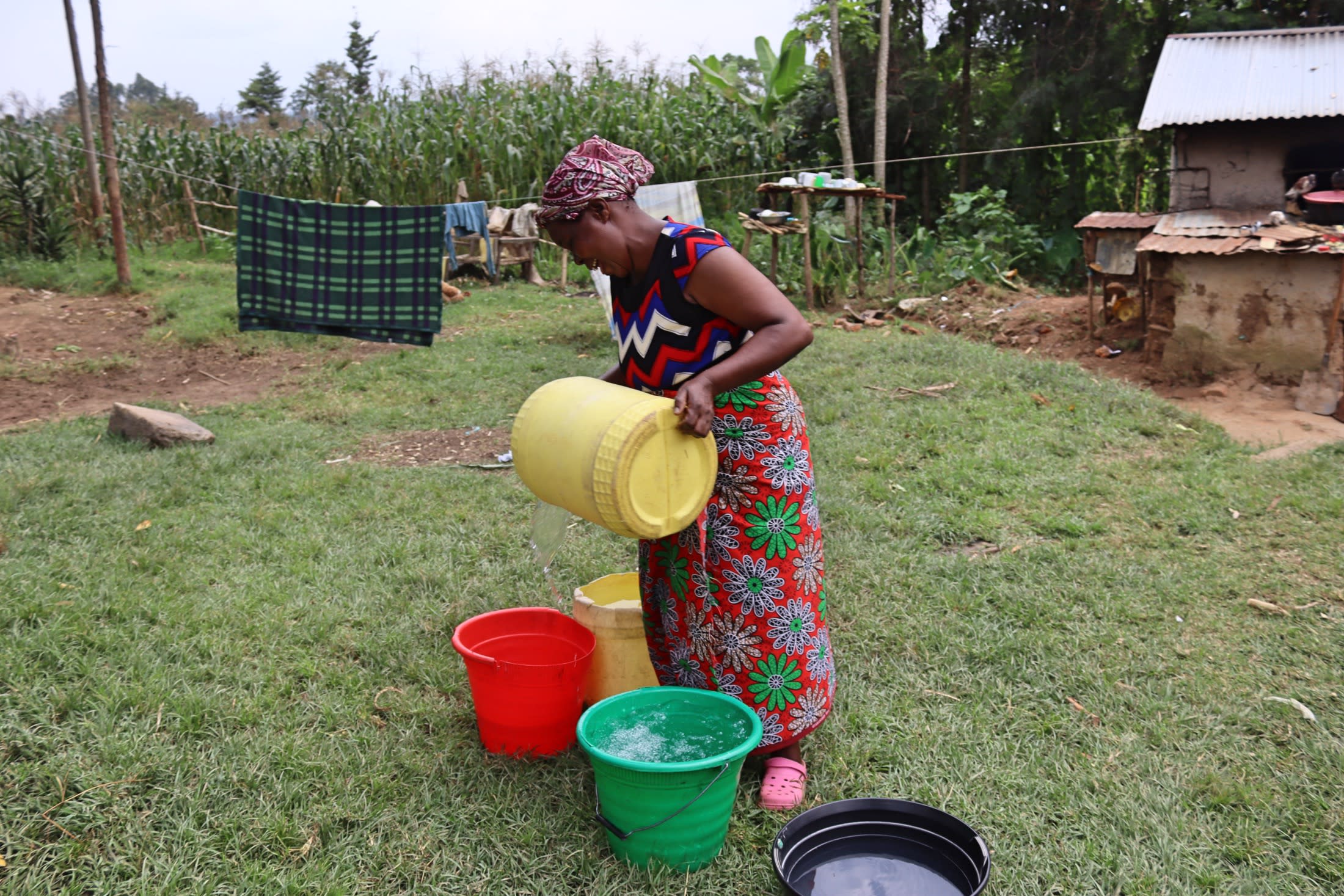Looking at Saidi Spring now, you might think it provides safe water to the 350 people of Namanja. But unfortunately, the walls and discharge pipe have only made water faster to collect. The water itself is still contaminated due to the construction's poor workmanship.
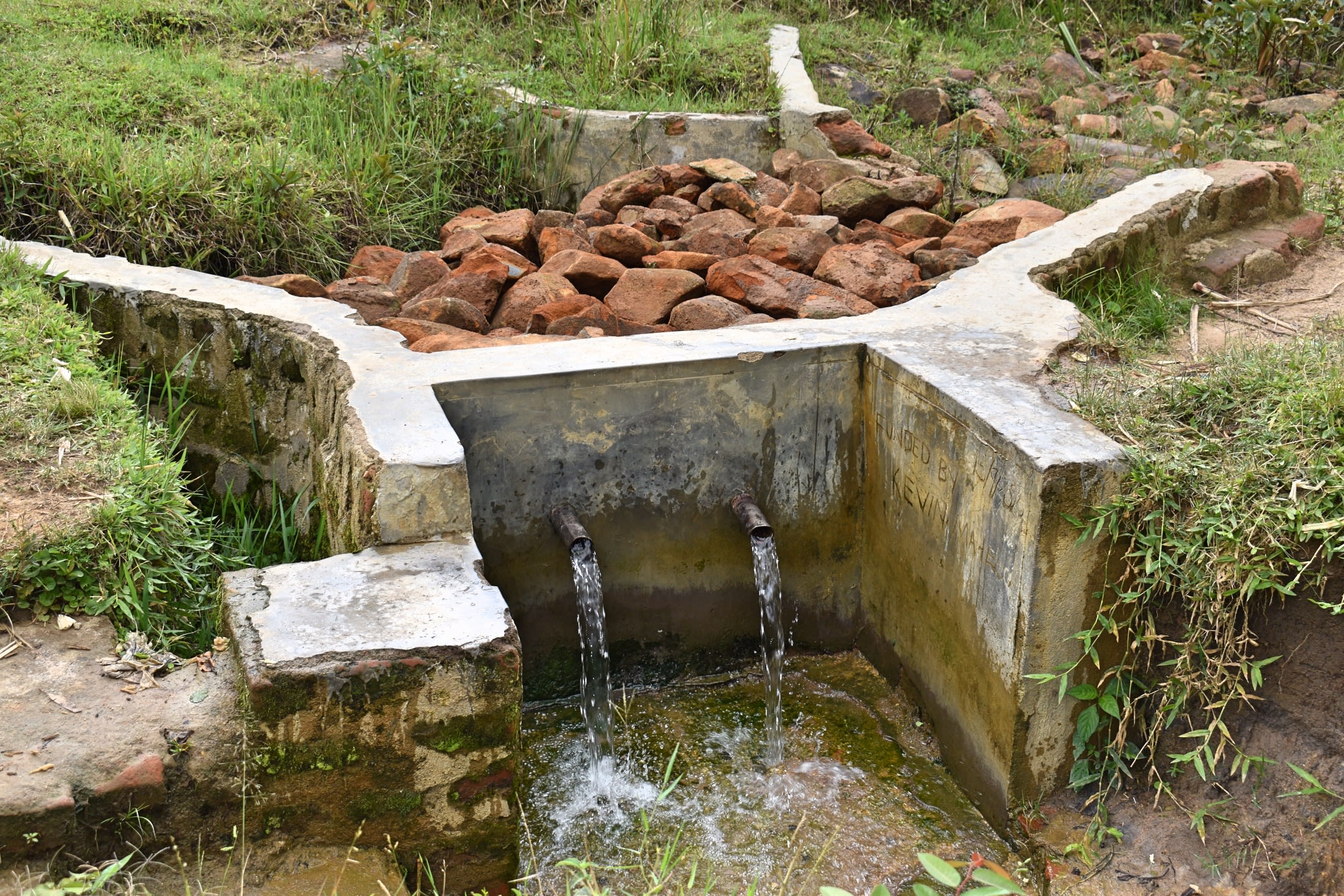
When we first vetted Namanja Community's suitability for water intervention, their spring was not protected. Since then, a politician vying for the votes of the community members hired contractors to "protect" Saidi Spring. As soon as our field officers saw the work, however, they knew the project was not sustainable - and that's hardly the project's only issue.
The spring was not protected at the correct location, which would have been the spring's eye, where the water filters up from beneath the ground's surface. Instead, the water source is open to animal, human, and environmental contamination.
Although large stones have been added behind the discharge pipes in an effort to filter the water, this measure alone does very little. The spring box (the area behind the pipes' wall) must include several carefully placed layers of rock, tarp, soil, and grass. It must also be fenced to prevent anyone from walking on the layers and compacting them over time.
Even though the project was only constructed a few months ago (as of September 2022), the walls and floor of the spring have already begun to show signs of wear, which suggests the workers may not have used waterproof cement. This means that soon, the people of Namanja will be back to square one without our help. For them, square one means an endless stream of water-related illnesses.
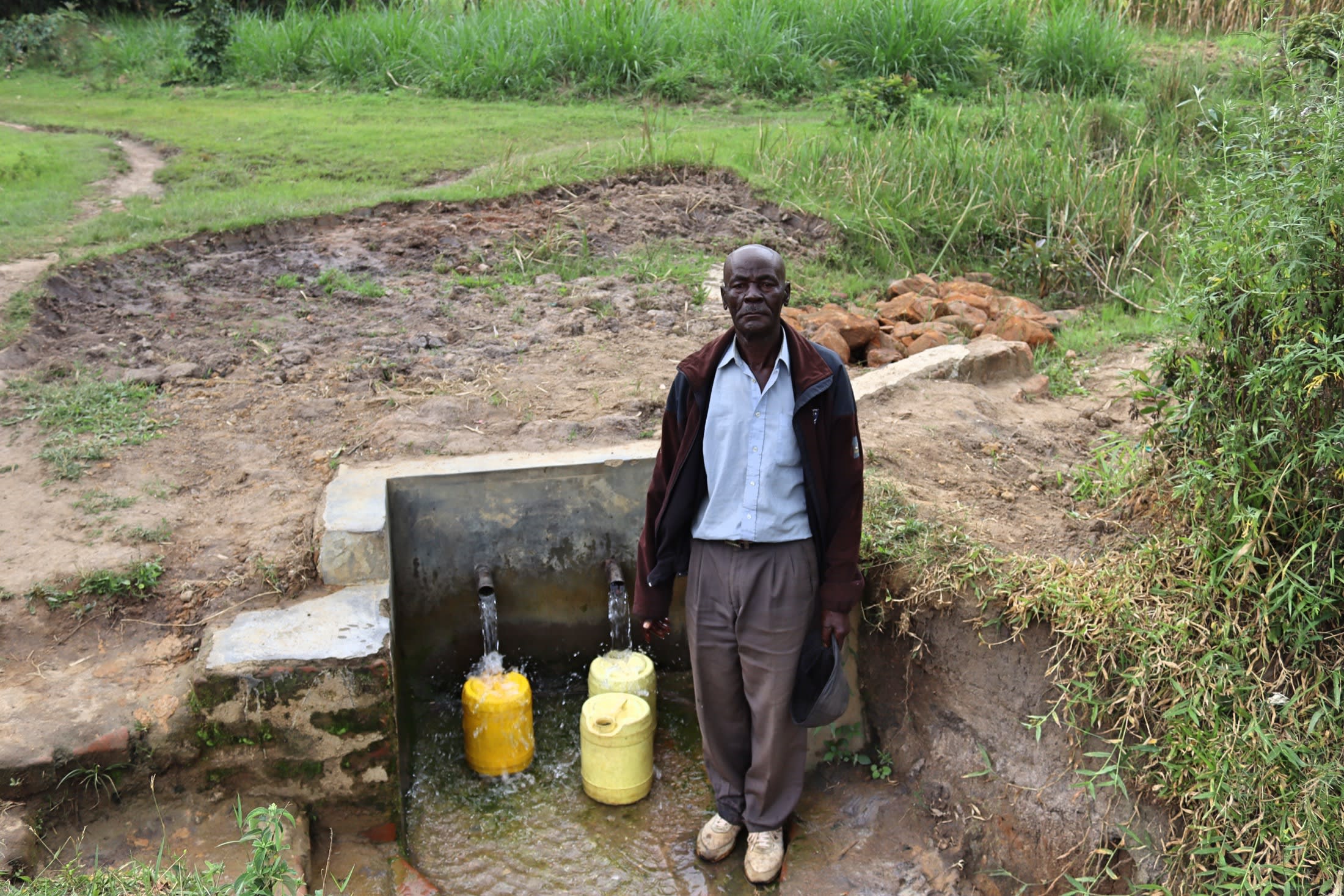
"I have for a long period of time made a hospital in my home," said 52-year-old farmer Saidi Namanja (pictured above at the spring).
"Diarrhea and typhoid are very troublesome, and if they are not well addressed, they tend to reoccur. [I] am a troubled man because I do not know when I will completely be safe from these diseases. The [most] recent occurrence scared me a lot. I was afraid that I might die, and yet I haven't settled my two wives and many children."
For young people in Namanja, this steep toll on their health makes them less hopeful about their futures.
"I want to become [a] doctor when I grow up," said 13-year-old Alex S. "I [am] worried [about] whether I can achieve [it]. I have been unable to attend class lessons due to sickness and being hospitalized due to diarrhea or typhoid diseases."
Namanja's people need a sustainable, well-made project in their community to protect them from the debilitating illnesses that have dogged their every step.
What We Can Do:
Spring Protection
Protecting the spring will help provide access to cleaner and safer water and reduce the time people have to spend to fetch it. Construction will keep surface runoff and other contaminants out of the water. With the community’s high involvement in the process, there should be a good sense of responsibility and ownership for the new clean water source.
Fetching water is a task predominantly carried out by women and young girls. Protecting the spring and offering training and support will, therefore, help empower the female members of the community by freeing up more of their time and energy to engage and invest in income-generating activities and their education.
Training on Health, Hygiene, COVID-19, and More
To hold trainings during the pandemic, we work closely with both community leaders and the local government to approve small groups to attend training. We ask community leaders to invite a select yet representative group of people to attend training who will then act as ambassadors to the rest of the community to share what they learn. We also communicate our expectations of physical distancing and wearing masks for all who choose to attend.
The training will focus on improved hygiene, health, and sanitation habits in this community. We will also have a dedicated session on COVID-19 symptoms, transmission routes, and prevention best practices.
With the community’s input, we will identify key leverage points where they can alter their practices at the personal, household, and community levels to affect change. This training will help to ensure participants have the knowledge they need about healthy practices and their importance to make the most of their water point as soon as water is flowing.
Our team of facilitators will use a variety of methods to train community members. Some of these methods include participatory hygiene and sanitation transformation, asset-based community development, group discussions, handouts, and demonstrations at the spring.
One of the most important issues we plan to cover is the handling, storage, and treatment of water. Having a clean water source will be extremely helpful, but it is useless if water gets contaminated by the time it is consumed. We and the community strongly believe that all of these components will work together to improve living standards here, which will help to unlock the potential for these community members to live better, healthier lives.
We will then conduct a small series of follow-up trainings before transitioning to our regularly scheduled support visits throughout the year.
Training will result in the formation of a water user committee, elected by their peers, that will oversee the operations and maintenance of the spring. The committee will enforce proper behavior around the spring and delegate tasks that will help preserve the site, such as building a fence and digging proper drainage channels. The fence will keep out destructive animals and unwanted waste, and the drainage will keep the area’s mosquito population at a minimum.

 Protected Spring
Protected Spring
 Rehabilitation Project
Rehabilitation Project












